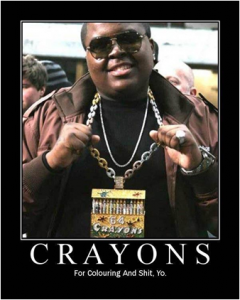 This last weekend I was out in Vancouver speaking at CanFitPro’s western national conference. I’m always amazed at the responses I get when I ask, “who is your most likely customer?” Maybe I shouldn’t be, after all this might have also been one of the toughest things for me to comprehend.
This last weekend I was out in Vancouver speaking at CanFitPro’s western national conference. I’m always amazed at the responses I get when I ask, “who is your most likely customer?” Maybe I shouldn’t be, after all this might have also been one of the toughest things for me to comprehend.
I can’t stress enough how important is to know your niche or be able to close your eyes and literally see your most likely customer standing before you. Once you have this very complete description you will be amazed at how your ability to communicate and generate interest from your potential audience increases. You will begin to think of ideas on how to reach, meet and recruit clients in ways your competitors will never catch on to. I know that may sound ridiculous so let me try to put it in a simpler more dramatic fashion. Would a gun enthusiast read an opera magazine? Would the language used to describe last night’s performance contain fitting and descriptive adjectives to describe the latest hunting paraphernalia? I think you get my drift.
Here’s a little exercise, begin with the following questions, answer them for who you think your most likely customer is, then try to develop 10 more questions for an even more through description.
(HINT: If you’re uncertain of who your most likely customer is then answer these questions for each the following: 1) Who would you like to train? (ie. Athletes, not recommended but common) 2) Who do you think is most around you population wise? 3) Who do you think is currently shopping for services like yours? Once you’ve answered for all three of these you will generally have one that stands out to you leading you to begin exploring that niche’s viability.)
- Are they male or female?
- How old are they? (10-15 year range is fine)
- What would be their primary goal?
- Why would they benefit from working with someone like you? Be specific.
- How much income does their household earn annually?
- What kinds of careers do they have?
- What kinds of hobbies and interests do they have?
- What kind of vehicles do they, or would they like to drive?
- How do they dress?
- Where would they buy clothes?
- Where would they go out for dinner?
- What organizations might they belong to?
Once you have a big long list of who, what, why, and where you can begin to search your local demographics and guess as to whether a number of these desired people are near by.
From that point forward all of your marketing, content and offers should be targeted to be of interest to these groups of people. You should use language that would make sense if you were conversing with them, you should refer to characteristics or roadblocks of the goals they may be trying to achieve. Your offers should be of high value based on what you think they may be looking for and you want to make sure both you and your marketing materials are present in multiple places they might frequent.
The more razor focused you can be on that one specific customer the easier it becomes to not only attract them but others also. Specialization adds value; people always want to work with the specialist.
Perhaps they may seem like common sense but repeatedly in front of audiences or more when I review this concept only a sparse few hands go up. I can guarantee this little exercise if taken seriously will completely change your business in weeks to months.

 YES! Contact me today to schedule a FREE no obligation consultation and trial workout.
YES! Contact me today to schedule a FREE no obligation consultation and trial workout.